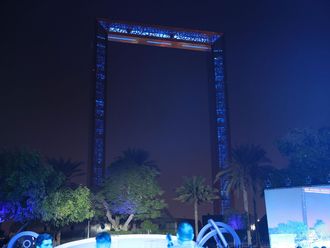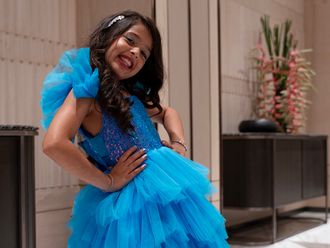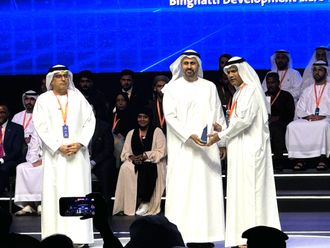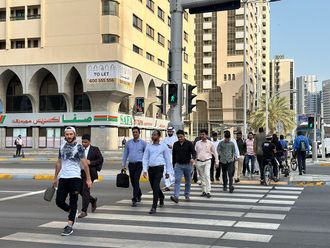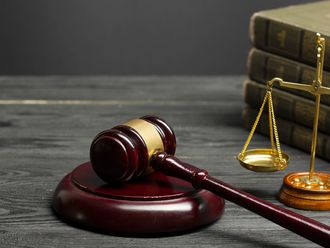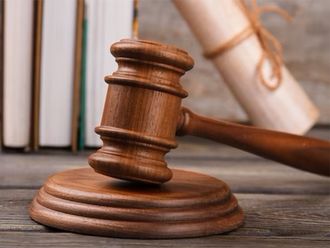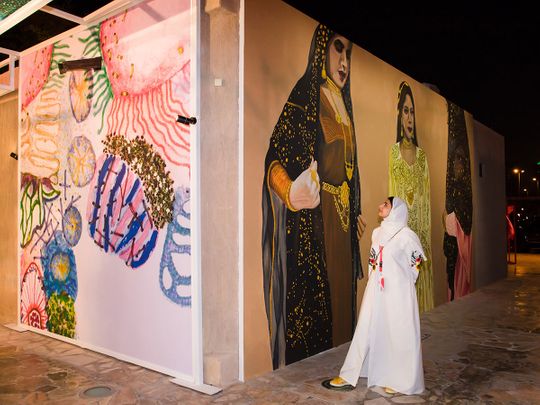
Dubai: The 11th edition of Sikka Art and Design Festival in Dubai has started, featuring six murals, nine outdoor installations, and over 100 talks, panels and workshops on trends of the international arts sector.
Running till March 5 in Al Fahidi Historical Neighbourhood, the festival is held under the patronage of Sheikha Latifa bint Mohammed bin Rashid Al Maktoum, Chairperson of Dubai Culture and Arts Authority (Dubai Culture) and Member of the Dubai Council.
On Friday, Hala Badri, Director-General, Dubai Culture, inaugurated the latest edition of the festival under the theme ‘New creativity. Same Path’. The festival also features cinematic and musical performances and entertainment activities, along with over 30 local food and beverage concepts in collaboration with Brand Dubai, fuelled by ‘Proudly from Dubai’ members to highlight the entrepreneurs and owners of these projects, celebrating the local culture and flavours of Dubai.
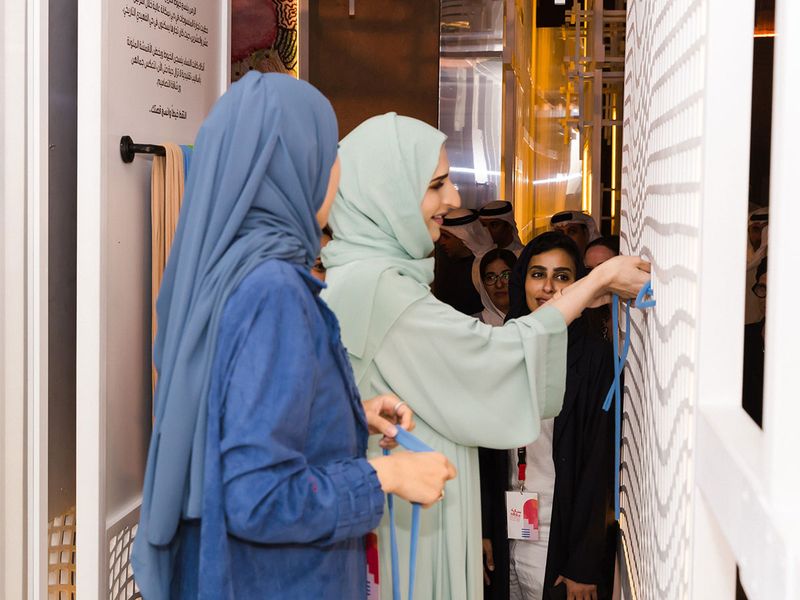
Sikka Art and Design Festival, which falls under the umbrella of the Dubai Art Season, also provides unique cultural and artistic experiences, designed by Dubai Culture in cooperation with a group of institutions and art centres, with the aim of presenting events and activities that highlight the aesthetics of the arts and reflect the richness of Dubai’s creative scene.
Comprehensive tour
During her visit, Badri was briefed on the festival’s highlights and toured the houses of the neighbourhood, each presenting a range of artwork. She began her tour seeing the installation ‘Threads of Time: weaving history on a blank canvas’ that was produced by the artists Hamda Ahmad Al Falahi and Reema Al Mheiri, in appreciation of the region’s heritage of weaving. She also visited the mural ‘Ya Labes el Tally’ by Fatima Al Ali and the collection of artworks presented in House 38 by artists Fatima Jawad, Maryam Al Huraiz, Maitha Al Omaira, and others.
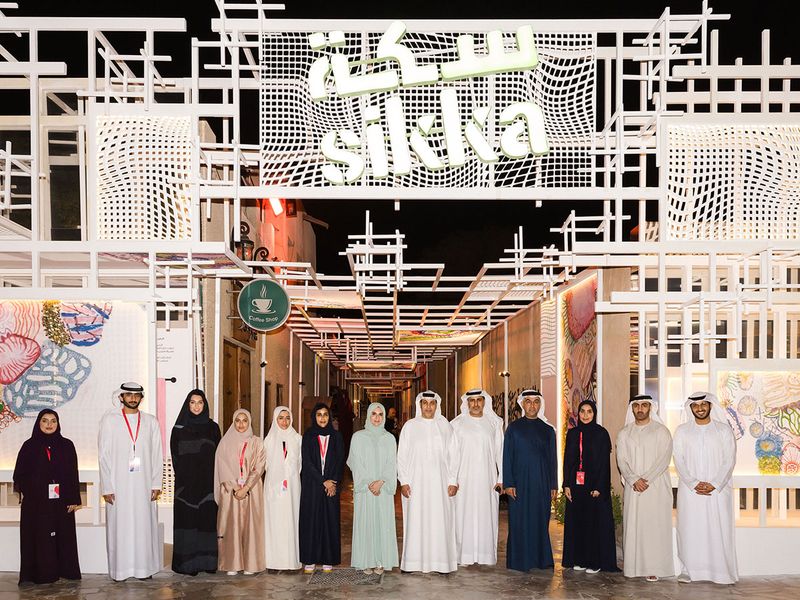
Badri visited House 31 and was briefed on the output of 14 artists, including the ‘Tasbih series’ by Moza Al Falasi, in which she depicts feelings and their projections on things, and the installation work ‘Shahin’ created by Melika Shahin, in which she explores the intersection between heritage, belonging and escaping from reality, and ‘Rugs’ by the creative Areen, aims to inspire the audience to communicate the message of love to others.
She also saw the origami-influenced installation ‘Mirrorigami’ by Ali Bahmani, and a group work created by students of the Higher Colleges of Technology - Saif Saud Alreyami, Hamad Al Jasmi, and Mohammad Ahmad AlDhanhani.
Badri praised the the artists who participating in the Talli House: Sarah AlKhayyal, Hajer Al Tenaji, Feryal Al Bastaki, Munira Al Mulla and Noora Taher, whose work was embedded in the craft of Al Talli, to celebrate the UAE’s success in registering it on the UNESCO list of intangible cultural heritage. She also toured the Digital Arts House that displays the works of 14 artists, including Mohamed Al Mansoori, Saeed Al Madani, Ahmed Al Attar, Ahmed Al Ali, Reem Al Mazrouei, Dalia Omran, Patrick Lichty, and others.
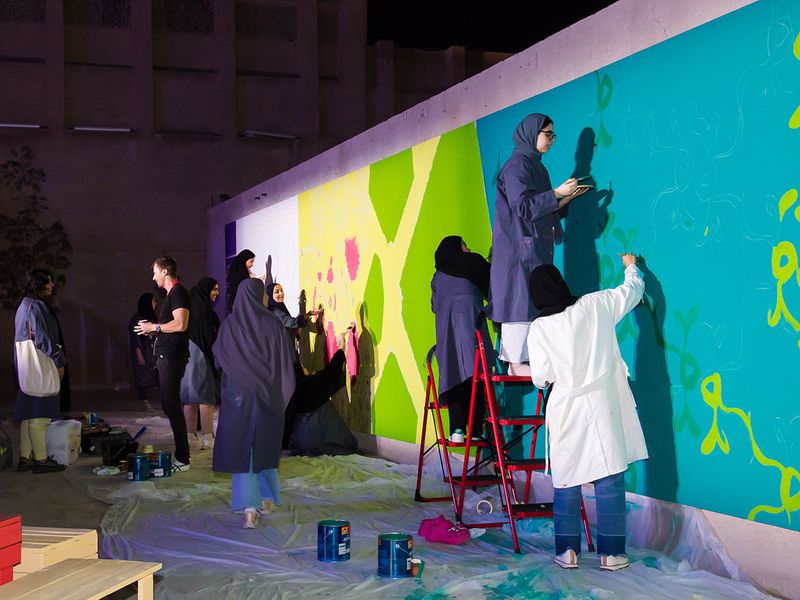
Badri also toured Bait Al Khazaf, which houses the works of 35 artists distributed among various sculptures and artistic installations, like ‘Thigmomorphogenesis’ by Abdullah Al Kindi, ‘Al-Darisha’ from Rawdha Al Ketbi, and ‘Migrant Minds’ by Moey Studio. Badri visited the Photography House, which includes photographs taken by artists Noora Al Neyadi, Shoug Abdulla, Walid Al Madani, Zayed Ibrahim Al Haddar, and Mohamed Almaazmi.
Promoting health
Badri also toured House 5 that witnesses the participation of the Ministry of Health and Prevention for the first time in the festival, with the aim of conveying the humanitarian message of the National Programme for Organ and Tissue Donation and Transplantation (Hayat) using its innovative ‘Art for Health’ initiative to harness community efforts towards addressing health issues in an engaging and interactive manner. She also toured Sikka House, which displays the works of many incredible artists, including Omar AlNajjar, Sarah Al Saman, Salma Al Mansouri, Hamda Ahmed Al Falahi, Mayed Abdulla, Ayesha Hadhir, and others.
Badri said Dubai has succeeded in achieving a prominent position in the arts and culture sector thanks to the visions of His Highness Sheikh Mohammed bin Rashid Al Maktoum, Vice President and Prime Minister of the UAE and Ruler of Dubai. “A decade after the launch of Sikka, the festival has succeeded in cementing Dubai’s position and global leadership, in addition to enriching its artistic scene with works that celebrate the creations of promising talent and young artists in the UAE and the region,” she said.
Contributing to the economy
“The continuous growth of Sikka Art and Design Festival reflects the depth of the cultural movement taking place in the emirate, and raises the contribution of the cultural and creative industries to Dubai’s GDP [Gross Domestic Product]. This year, we seek to present an exceptional edition of the festival, recognising the importance of the role of cultural tourism in Dubai, especially since the festival has turned into a supportive platform for all artists with the rich programmes it offers that reflect the artistic diversity of our talent.
“This is a fulfilment of Dubai Culture’s commitments aimed at creating a sustainable creative and artistic ecosystem capable of empowering creative talent and refining their skills, ensuring the prosperity of their businesses in a way that supports Dubai’s creative economy, and achieves its cultural vision of being a global centre for culture, an incubator for creativity and a thriving hub for talent.”


